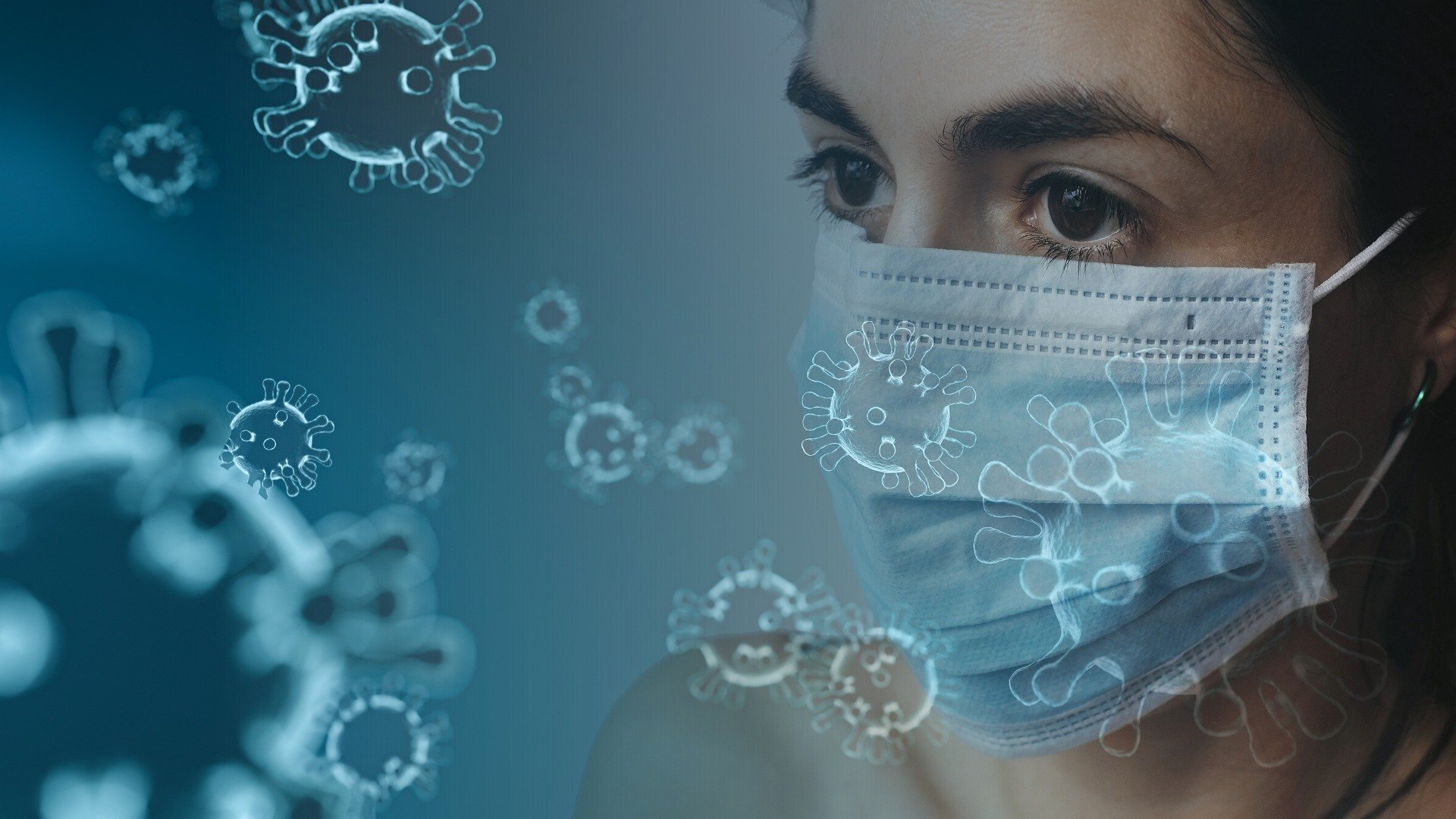My parents drove a Pontiac sedan while I was growing up. It proudly sported a bumper sticker with the words “Question Authority.” Over the years, that sticker faded and parts were rubbed off, but it was still there decades later when my son finally retired the car.
My mom was a child in Germany during World War II. She experienced first-hand what can happen when people question authority – and what happens to a nation when they don’t. She remembers vividly the time when her father said “Guten Tag” (good day) to a group of people rather than “Heil Hitler.” He was immediately taken into custody. He was fortunate that his brother was able to get him released later that night.
As a kid growing up in a small Nebraska town, I was encouraged to question authority. So were my brother and sister. When I reflect back on that, I can see that it couldn’t have been easy for my parents to raise children who were not immediately obedient. I know, because I carried on the tradition with my own sons! My dad, who served as County Attorney for many years, respected the law, but questioned the experts and looked carefully at all sides of an issue in order to form his own opinions. He became, at times, an advocate for people who were accused of breaking unjust laws.
So you can see it is in my bones to question authority. That’s why I feel compelled to speak up today. There are simply too many things about the corona virus pandemic that don’t add up. There are huge holes in the science. I have two Masters of Science degrees, in Genetics and Systems Engineering, so I have some background knowledge to assess that. There are troubling conflicts of interest with experts and decision-makers. There are laws and restrictions placed on our civil liberties that do not actually promote public health (or even meet the common sense test), with more in the works. The media is distributing misinformation and fostering hysteria. And maybe the worst thing of all is that dissenting voices are being shut down on Google, YouTube, Facebook and twitter. That should scare the hell out of people. It does me. Much more so than this so-called pandemic.
I know that it takes more than a few links to scientific papers to get the majority of people to question the status quo. We trust our scientists, doctors, and public health officials to have our best interests at heart. We’re busy with our own lives. We follow the rules because we want to keep ourselves and loved ones safe. What is happening in our country and around the world right now, though, is simply too important to leave to the experts. I strongly encourage you to awaken your innate curiosity and inner rebel to follow along with me and do exactly that - challenge the status quo!
“Unthinking respect for authority is the greatest enemy of truth.”
Below, I have a list of questions that concern me about the prevailing narrative. If you’ve been asking yourself some of these same questions, dig in and do some research. Consult your heart and gut, along with your brain, to pick a thread and follow it. You might find, like I did, that when you do, the whole story begins to unravel.
Image by Roland Steinmann from Pixabay
Is there really a COVID-19 virus?
OK, I’m jumping right into the deep end, or down the rabbit hole. If someone would have asked me if there really was a corona virus behind the pandemic a few weeks ago, I would have thought they were crazy. Now, I’m not so sure. If you google this question, you’ll find CDC sites that assure you they have identified and sequenced this virus. They have certainly sequenced an RNA fragment that was taken from the lungs of an early Wuhan patient. Chinese researchers assumed early on that this piece of genetic material was a new virus that caused people near the open, wet market to get sick. They quickly moved on to develop a test to detect the presence of this particular RNA sequence. That test is called a RT-PCR Test.
A very good explanation of this process is given by Dr. Andrew Kaufman in his Special YouTube Report. It’s a bit science-y, so put your thinking cap on. He explains in quite a lot of detail how the RT-PCR test works, and why it is unreliable and known to generate a lot of false-positives. It is essentially a manufacturing technique that takes a tiny bit of genetic material and reproduces or amplifies it through a series of iterations. It’s very useful for research, but was never intended to be used as a clinical diagnostic.
“Scientists are doing an awful lot of damage to the world in the name of helping it. I don’t mind attacking my own fraternity because I am ashamed of it. ”
Kaufman also wonders why the sequenced RNA material has not yet been clinically verified as a viral agent that induces the symptoms attributed to COVID-19. That is typically considered a necessary validation step when doing good science. The same question is raised by Kevin Corbett, PhD in his monograph Where Is the Evidence for the Existence of the ‘Novel Coronavirus’, ‘SARS-CoV-2’?
With all of the world’s resources thrown at this pandemic, why hasn’t the “gold standard” been applied?
Dr. Kaufman also introduces some cool, new science for me. It turns out that there are tiny vesicles in our bodies called Exosomes. They were identified about 30 years ago, but only recently have we learned more about the roles they play in the body. They are the same size and shape as viruses. They contain genetic material like viruses. They interact with cell receptor sites like viruses. And, they are the good guys. Exosomes help protect our bodies from toxins. When a person is ill, stressed, or exposed to radiation or toxic chemicals, more exosomes are present, supporting our immune system and protecting our cells. Could it be that what researchers found in the lungs of their patients was the presence of exosomes, rather than a virus?
Why are so many people dying?
There are a lot of people dying, and yet, not nearly as many as were predicted. What most of us didn’t realize was that lots of people die every year due to seasonal influenza. Approximately 9% of the world’s population is affected annually, with up to 1 billion infections, 3 to 5 million severe cases, and 300,000 to 500,000 deaths each year. In the U.S. alone, nearly 20% of the population is affected. On average, there are 25 to 50 million documented influenza cases, 225,000 hospitalizations, and ultimately more than 20,000 deaths occur every year. In last year’s season, over 32,000 deaths in the U.S. were attributed to the seasonal flu. Although influenza can affect individuals of all ages, most influenza-related deaths occur in the elderly (65 years of age and older) and in those with underlying cardiovascular and respiratory comorbidities.
Those are terrible statistics – and yet, daily death tolls weren’t published. People weren’t quarantined or the world economy shut down.
We all know that Italy was hard hit this season, presumably by COVID-19. As of mid-May, the death toll is estimated at 32,000. Italy’s National Institute of Health has been combing through the records of patients who have died. Their average age is 79.5. And the overwhelming percentage of these people were already suffering from multiple, long-term, serious health conditions. A 2019 paper published in the Journal of Infectious Diseases, states “Italy showed a higher influenza attributable excess mortality compared to other European countries. especially in the elderly.” Apparently, Italy’s alarming death rate preceded the arrival of the COVID-19 virus.
The city of Bergamo in northern Italy was the epicenter. This may just be coincidence, but… the city was vaccinated en mass not once, but twice, in the 2 months preceding the Coronavirus outbreak. In September 2019, Italy rolled out an entirely new type of influenza vaccine. This vaccine, called VIQCC, is different than others. Most available influenza vaccines are produced in embryonated chicken eggs. VIQCC, however, is produced from cultured animal cells rather than eggs and has more of a ‘boost’ to the immune system as a result. VIQCC also contains four types of viruses – 2 type A viruses (H1N1 and H3N2) and 2 type B viruses. Then in December, there was another mass vaccination program against Hepatitis-C.
ANY vaccines given to people whose immune systems are already weakened—such as the elderly and infirm—are potentially dangerous. It’s entirely possible that two vaccines, given within the space of a few months, one of which has added new viral material and/or a variety of new cellular and genetic debris, may have contributed to the mortality rate. It’s also worth noting that there is horrendous air pollution in areas of Northern Italy that could have also played a role.
Because the tests for COVID-19 are so unreliable, and have been in short supply, it’s impossible to determine how many of the Italian deaths were actually due to the corona virus. The same is true for the 319,000 deaths worldwide (as of mid-May) that have been labeled as COVID-19. As awful as that number is, it’s still on the low end of the yearly average.
How reliable are the pandemic models?
Many years ago when I was in graduate school, I was introduced to a field of study called Operations Research. I had a brilliant professor from Sri Lanka who did his best to help me understand how to model non-linear systems in order to aid in decision-making. It was very challenging. A takeaway for me was how sensitive the models are to initial conditions, the data that you input, and the assumptions you build in. The models can be helpful if your data is reliable and sufficient. They can also be orders of magnitude off if you don’t have good data to begin with.
If you’re going to rely on predictive models to make sweeping policy decisions, wouldn’t you want to check out the modeler’s track record? World leaders first turned to Neil Ferguson, through his institute at London’s Imperial College, to predict the COVID-19 impact. As you can see, Ferguson has a record of making stupid worst-case predictions about the threat of new viruses.
In 2001, Ferguson warned the government that 150,000 people could die due to the Foot and Mouth outbreak. Six million animals were slaughtered as a precaution, costing the country billions in farming revenue. In the end, 200 people died.
In 2005, Ferguson created panic by estimating a death toll of over 200 million people due to the Bird Flu outbreak. The real number was in the low hundreds.
In 2009, one of Ferguson’s models predicted 65,000 people could die from the Swine Flu outbreak in the UK — the final figure was below 500.
In 2020, Ferguson used the same agent-based model built in 2005 to predict the Bird Flu outbreak, to create his predictions for COVID-19. I guess if the model didn’t hold up in 2005, Ferguson thought it would fare better 15 years later? He warned Prime Minister Boris Johnson that over a half-million people would die in the UK from the corona virus. He predicted over two million deaths in the U.S. His dire warnings caused government leaders in the US, Germany, France, and the UK to institute massive lockdowns.
In hindsight, it’s fair to wonder why Ferguson was the go-to guy. Maybe because his institute receives tens of millions of dollars in funding from the Gates Foundation?
Is it possible that predictive infectious disease models fail because they’re focused on a small piece of the puzzle? I’m beginning to question the prevailing paradigm for infectious disease. There are respected scientists who are proposing new models that take into account other factors, like the bioterrain. My hope is that we can use this pandemic experience to expand our focus so we can bring down the yearly death toll. It doesn’t appear that annual flu shots are the solution. Neither are economic shutdowns.
Do we pin our hopes on a new COVID-19 vaccine?
Did you know that two of the COVID-19 vaccines that are being rushed through development are based on new technology? They are DNA and RNA vaccines that have never been released for public use. DNA technology is actually gene therapy. Genes are injected into the body, and they permanently alter the genetic makeup of the recipient in unknown ways. RNA vaccines would carry the danger of triggering autoimmune reactions, meaning the body basically goes to war against itself.
If you’re someone who is already aware of health concerns relating to vaccines, then I’d be more concerned, especially as there are powerful forces that want to force vaccinations on all of us.
If you’re someone who has dismissed concerns about vaccines, thinking those people are crackpots, well… I’d urge you to investigate for yourself. There is a compelling body of evidence that suggests vaccines can cause more harm than good. If you are someone who has been worried about COVID-19 because you’re in a high risk category, I’d urge you to think twice before offering yourself up to be a guinea pig.
Why are we all wearing masks?
Did you know that a virus ranges in size from about 20 to 400 nanometres in diameter. That’s really tiny. The N95 surgical respirator that we’ve all read about recently, can filter particles down to 0.3 micrometers, which is 300 nanometers. And, that’s if the masks are properly fitted. Just barely in the range to filter out a virus. Any other masks, like the N3 surgical masks or all the homemade cotton ones, don’t even come close.
I find it puzzling that while many people understand that wearing a mask won’t necessarily keep them from being infected, they’ve been told that it may keep them from infecting someone else. Talk about shaming us into compliance. Doesn’t it make common sense, though, that if a mask can’t keep virus particles out, they also can’t keep virus particles in?
This May 2020 article published by the CDC agrees with my common sense. It also questions the effectiveness of all the sanitizing and hand washing we’ve been told to do.
“In this review, we did not find evidence to support a protective effect of personal protective measures or environmental measures in reducing influenza transmission...Hand hygiene is a widely used intervention and has been shown to effectively reduce the transmission of gastrointestinal infections and respiratory infections. However, in our systematic review, updating the findings of Wong et al., we did not find evidence of a major effect of hand hygiene on laboratory-confirmed influenza virus transmission...We did not find evidence that surgical-type face masks are effective in reducing laboratory-confirmed influenza transmission, either when worn by infected persons (source control) or by persons in the general community to reduce their susceptibility...”
A Korean study published in the Annals of Internal Medicine reported that masks on COVID-19 infected people did not reduce the transmission of droplets when those patients coughed.
Wearing masks, especially cloth ones, come with their own health risks. This 2015 BMJ study cautioned that wearing cloth masks may result in increased risk of infection, due to moisture retention, mask re-use, and poor filtration.
“Not only do face masks fail to protect the healthy from getting sick, but they also create serious health risks to the wearer. The bottom line is that if you are not sick, you should not wear a face mask.”
Are authorities urging us to wear masks because they think it will make us feel safer, like giving a child a teddy bear to hold? Or, do they want us to get used to doing what we’re told? I think this appalling video that shows five police officers bringing down a mother in the Brooklyn subway, cuffing and charging her in front of her young daughter because she pulled her mask down for a few minutes to talk on the phone, answers that question.
Image by geralt from pixabay
For the last couple of months, my 83-year old mother has been re-experiencing her childhood trauma every time she turns on the news and watches another story about petty tyrants and the loss of freedom.
“Don’t people realize what’s happening?” she keeps asking all of us family members.
“Don’t worry, Mom. Americans are too smart, independent and free-spirited not to question what’s happening. You’ll see. More people will wake up, ask the important questions, and demand truthful answers.” I reassure her.
I hope I’m right.





